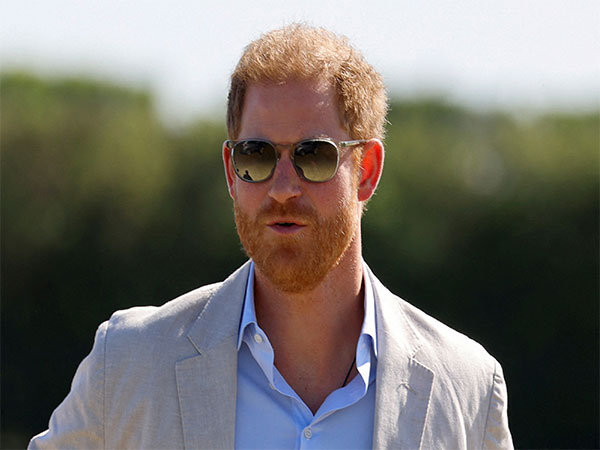Former Bafana Bafana coach Pitso Mosimane was a very interested spectator at the recent Noord/Suid Schools Rugby tournament at Paul Roos in Stellenbosch. The great soccer manager was there to see for himself what foundations the Springboks’ success has been built on and why South African men’s rugby is at the pinnacle of the sport. And he left under no illusions.
“Pitso said to me that until about 12 years old, South African soccer teams can beat anyone in the world,” Noord/Suid founder and former Springbok wing Pieter Rossouw told Daily Maverick. “But after that, when it gets more technical and ‘professional’, South African soccer starts falling behind because it doesn’t have the same schools’ base.” It might sound arrogant but there really is no excuse for South African rugby not to retain its place at the top of the sport for years to come.

The incredible quality and talent at high school level is jaw-droppingly good and it is only getting better. This country has always had a proud tradition of powerful schoolboy rugby thanks to its healthy junior ranks. But that depth has deepened.
Schools such as Grey College, Paul Roos, Affies (Afrikaanse Hoër Seunskool), Paarl Gimnasium, Paarl Boys High and Monument have been the bedrock of the schools’ rugby system. And they remain there. There is another level of about 20 schools such as Rondebosch Boys High, Jeppe Boys, KES (who had a nightmare result on day one of the festival, losing 102-o to Paarl Gim), SACS, Waterkloof, Durban High School, Grey High, Boland Landbou and so on, who regularly produce good teams and quality players.
Markus Muller Of Paarl Gimnasium U19a scores a try during match against Rondebosch Boys at the Western Province Rugby Schools Day. (Photo: Ashley Vlotman / Gallo Images) Paarl Gim centre Markus Muller scores for SA Schools in the U18 International Series against Ireland in Paarl last year. (Photo: Ashley Vlotman / Gallo Images) But now there are “unfashionable” rugby schools such as Noordheuvel (Krugersdorp), Garsfontein (Pretoria), Durbanville High School (Cape Town northern suburbs) and EG Jansen (Boksburg) – just some of the new wave of highly skilled and competitive schools mixing it with the traditional heavyweights.
In fact, Noordheuvel came inches from beating Grey College in their first match at Noord/Suid. A difficult 45-metre penalty on the angle sailed inches wide to allow Grey a 24-22 win. Garsfontein lost 34-32 to Paul Roos, with the latter playing on their home field, and Durbanville High beat traditional Gauteng pacesetters Monument 30-21.
It’s not just the competitiveness either, but the quality of rugby these teams are playing. Looking at the Noord/Suid games, which also includes second teams, the standard was high. It’s obvious that the quality of coaching and the level of professionalism are way ahead of most schools in the world.
Only New Zealand schools can compare, albeit with a smaller pool of players and less depth. It is no surprise the Springboks and All Blacks are consistently the two most dominant teams in the sport. School coaching in South Africa has also become a viable career for ambitious mentors.
It’s not a last-resort job, or a stepping stone to men’s provincial coaching, but a highly sought after career path with great benefits underpinned by stressful, quality rugby. Big schoolboy rugby matches attract far more fans than Currie Cup games and the demands from old boys and parents are high. Top first team coaches are earning north of R1-million a year as school governing bodies raise funds to lure them.
Paarl Gim’s fullback Dawid Badenhorst is tackled by a KES player at the Noord/Suid Festival played at Paul Roos in Stellenbosch. (Photo: www.teamphotosa.
co.za) Successful rugby programmes are an attractive shop window for a school to attract more pupils, more families and therefore more earning potential. “Most countries don’t have this system, so they have to spend a lot of money to make their players better,” Rossouw, who is also Paarl Gim’s head coach, said.
“The school system is doing it for South Africa. And the school environment is creating a lot of coaches. The coaching has become a lot better.
“Some of the best rugby coaches are now working at school level because there aren’t a lot of positions in South African professional rugby. “As a coach there are great tournaments and superb competition at school level. You can actually have a stable coaching career making good money.
Professionally, if you lose, you get fired. At school it’s not like that, although at some top schools it is becoming a bit more ruthless.” Jeppe High’s first team coach Drickus Venter has also lived through the changes to a much more professional rugby environment at school level.
“I’ve been a teacher now at Jeppe for 17 years. I’ve been coaching first team rugby for almost nine years. And it’s become so professional,” Venter told Daily Maverick.
“The programmes that some of these schools run are ridiculous, us included. These kids work exceptionally hard because there’s such a deep pool of talent in this country, so they have to work hard to stay ahead. “There are some really smart people and some great coaches out there.
They work each other out quickly, and they stay ahead of the curve and do stuff a little bit differently. “When I played at school, we trained two or three times a week and ran out on Saturday and did our best. That has completely changed.
There are psychologists and nutritionists, physios and biokineticists. It’s next level.” Grey College’s Ethan Adams during the SA Schools profile shoot.
(Photo: Waldo Swiegers/Gallo Images). And the increase in professionalism has led to better coaching, and not only at first team level. Schools that are taking rugby seriously, pay as much or close to the same attention to the under-14E team as they do the under-19A (first team).
“Our rugby slogan is that ‘hard work beats talent when talent doesn’t work hard’,” Rossouw said. “We’ve got really good players, but a lot of the time it’s just average, normal kids that work really hard. This is more important than the individual.
” Paarl Gim’s philosophy is wonderfully simple – they see every boy as a potential under-19A player and therefore he must be coached as if he were a first team player. “Coaching and conditioning mustn’t keep a boy back if he plays under-14 C or D because everybody must have the opportunity to play first team,” Rossouw said. “Being coached the same and being fair makes everyone happy, including parents.
They can all enjoy rugby from the lowest under-14 team to the first team.” Jeppe has a similar outlook, as do most schools these days. Depth is vital because as the school game becomes more professional, injuries stack up.
By midway through a season, first teams could be without six or seven ‘first choice’ players, which is why coaching and conditioning quality throughout the programme is vital. “We align with each other a hell of a lot more than we did in the past,” Venter said. “We took it from first-team level, and we broke it down.
What systems can we cover that are going to stay the same for that kid from under-14 to first team? The idea is that by the time they get to matric, they know exactly what this type of call is, what their defensive structures are, where do you have to go when it’s a middle scrum. “Initially we started by aligning all the A-team coaches, and then B-team coaches and they spread the love to the C-D-E teams. “All those guys at C-D-E know how to fold from a middle scrum, for instance.
“You never want to box a coach in completely. You want to allow him to have his spice and flavour, which he can add to his team, but it’s also prescriptive and within the overall perimeters of the gameplan.” Action from the match between Jeppe (in black and white stripes) and Grey College.
(Photo: www.teamphotosa.co.
za) Jeppe (in black and white) versus Grey College at the Noord/Suid Festival at Paul Roos on 1 April. (Photo: www.teamphotosa.
co.za) Just looking at the Noord/Suid tournament, the conveyor belt of talent is staggeringly good. Using the outside centre position as a simple example, the choices must be the envy of the world.
Grey College’s Ethan Adams, a battleship of a centre, built more like a Test hooker with the pace of a wing, made SA Schools last year and is only in matric this year. Paarl Gim’s Markus Muller also played SA Schools last year and is in matric in 2025, wearing the No 13 jersey. Jeppe’s centre Lindelani Nkambule is another exceptional talent, as is Rondebosch’s Randall-John Davids, who is in SA Rugby’s Elite Player Development programme.
These four boys, and no doubt others around the country, are vying for two places in one position at SA Schools level this year alone. It’s an incredible trove of riches. And given the competitiveness and professionalism of schoolboy rugby, the raw materials will keep being produced.
Unfortunately, a bottleneck after school will not allow all these talents to play for the Boks. Some might even end up representing other countries, as we have seen with the likes of Duhan van der Merwe for Scotland. That is the price South Africa has to, and willingly, will pay thanks to its exceptional schoolboy programmes.
DM.
Sports

SA schoolboy rugby is the base on which world domination should continue indefinitely

Springbok rugby has nothing to fear for years to come thanks to its growing production line.The post SA schoolboy rugby is the base on which world domination should continue indefinitely appeared first on Daily Maverick.















